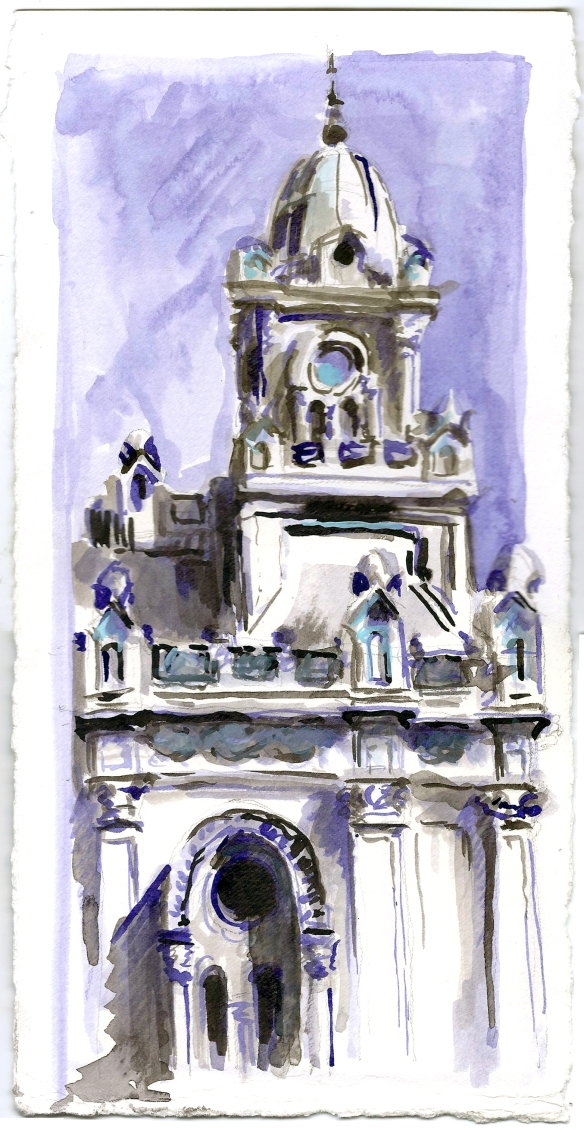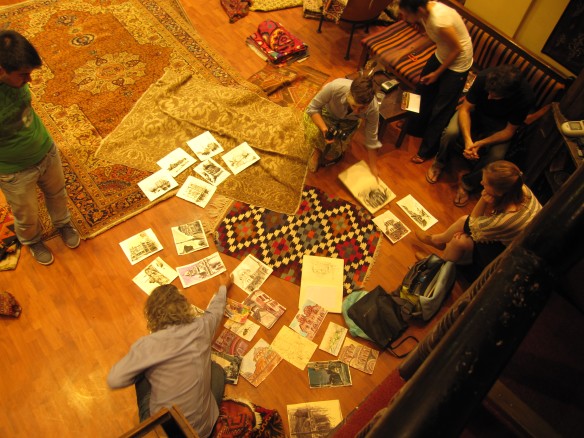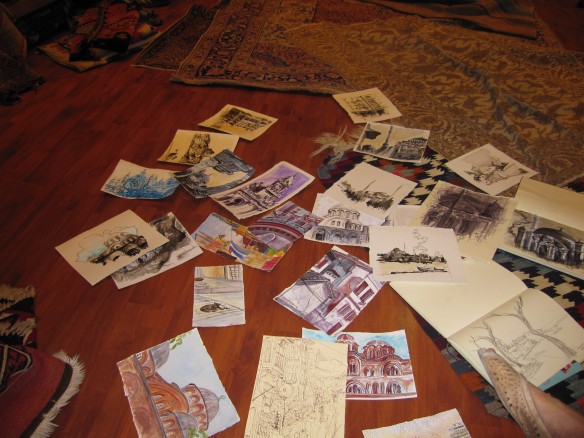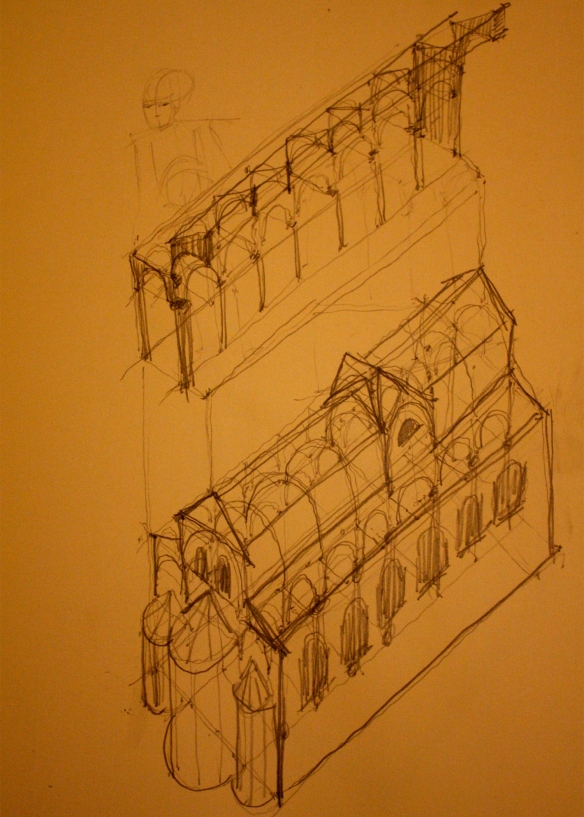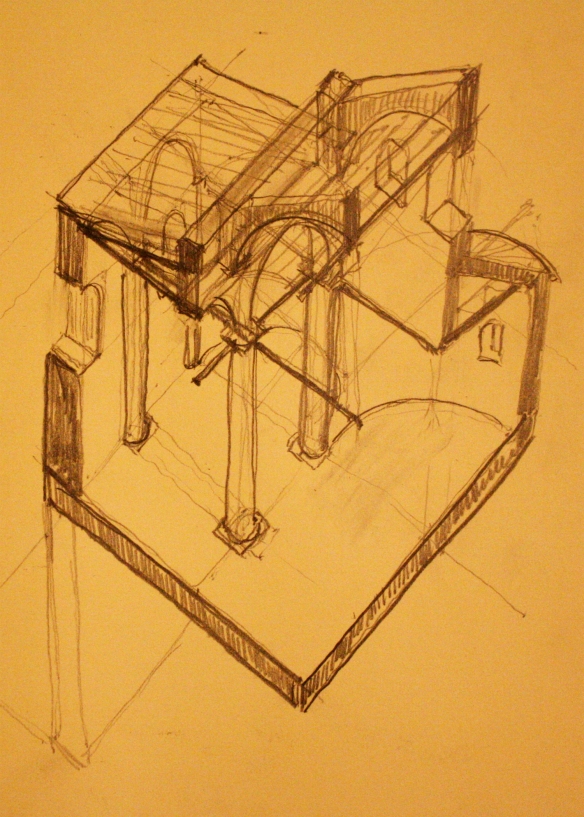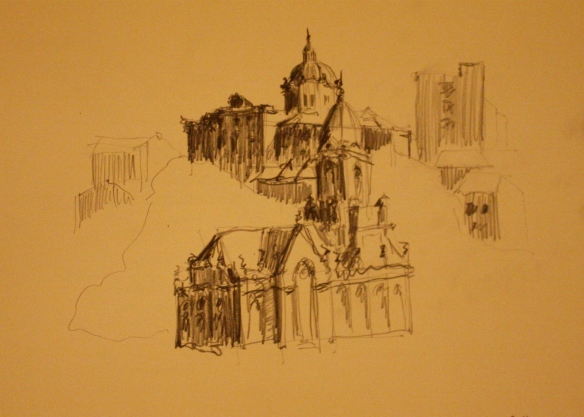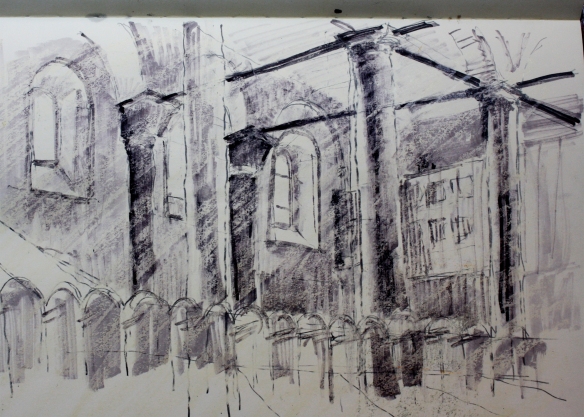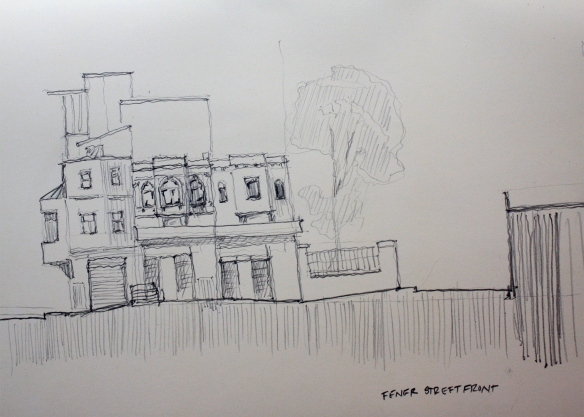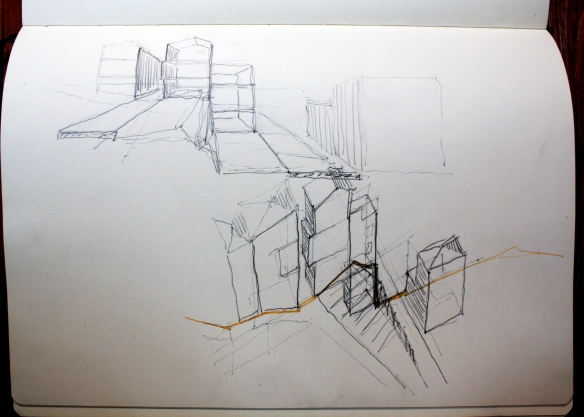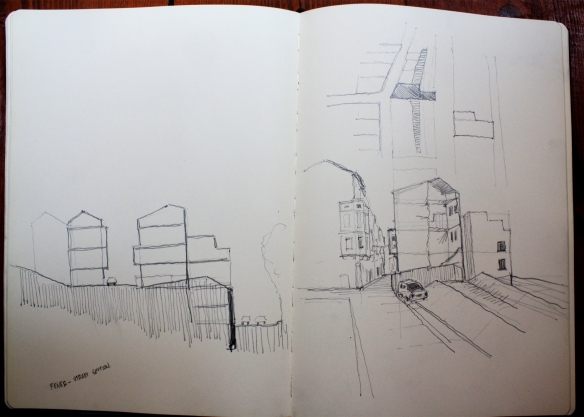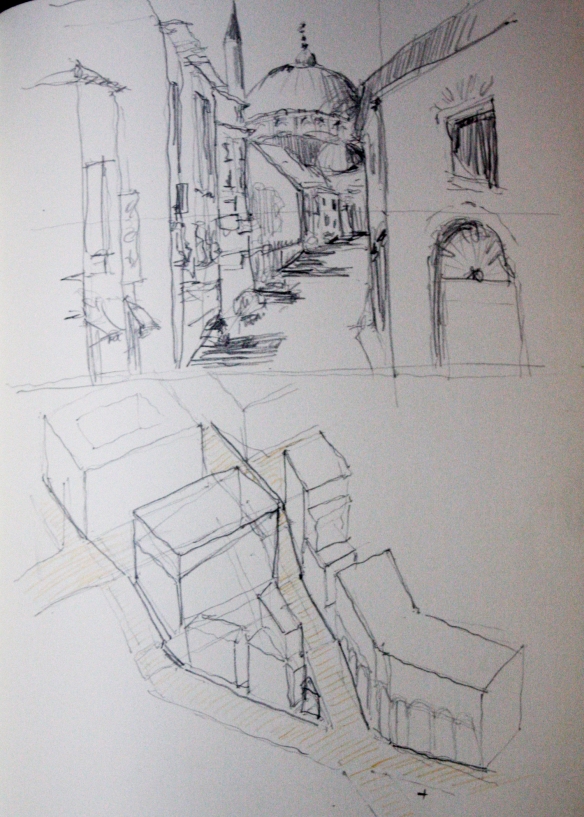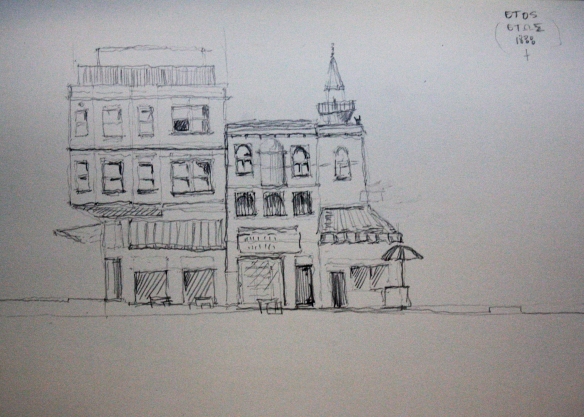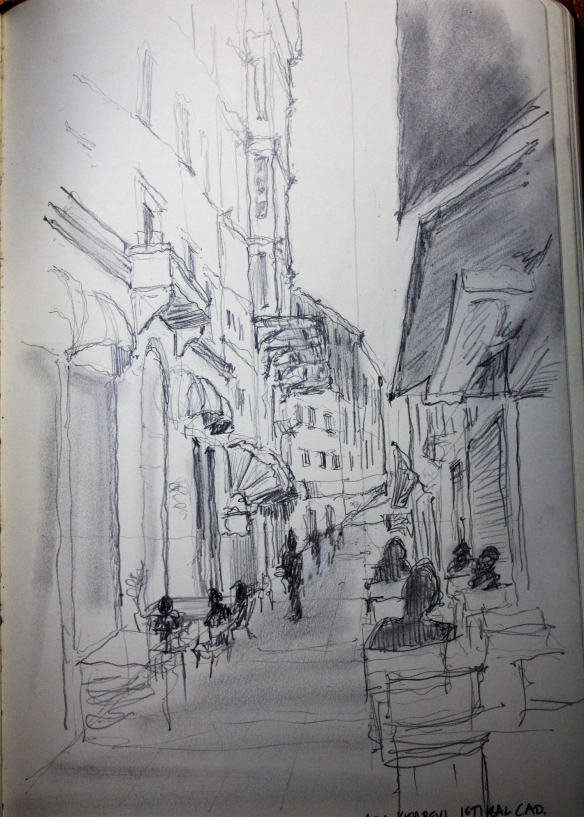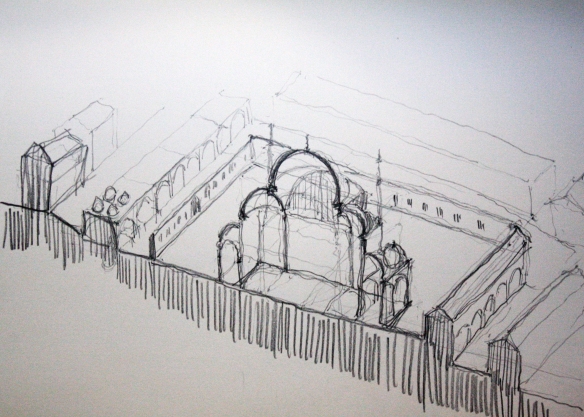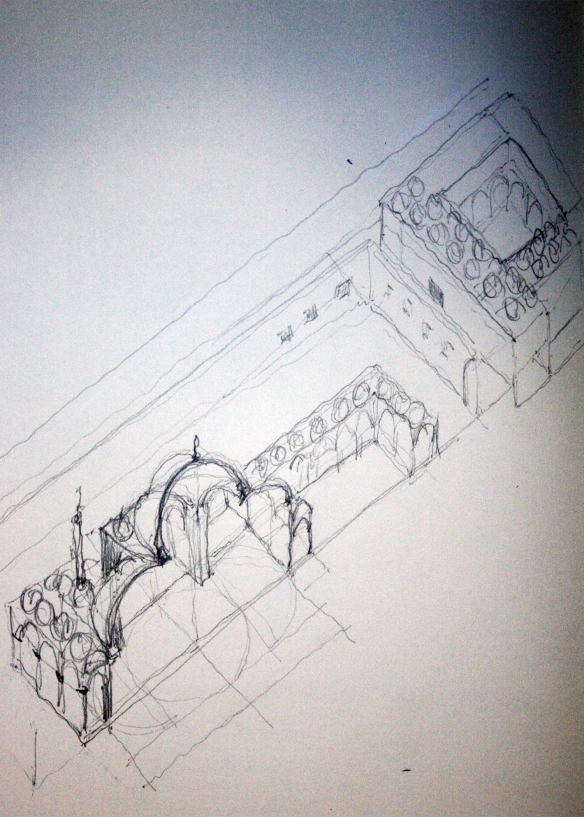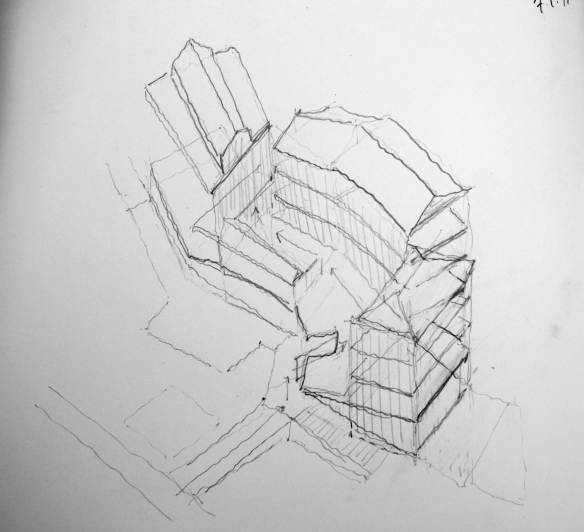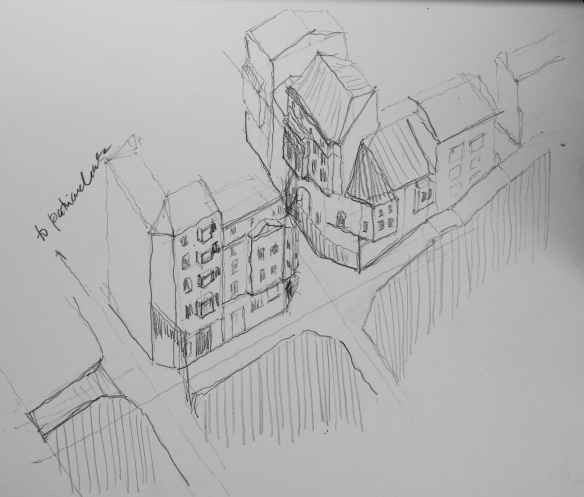I have decided to take a Turkish language class for the month of July. The class last for 4 hours during the weekdays, and I usually emerge, head spinning, after drowning in an unfamiliar vocabulary and a backwards sentence structure. At the end of it all, Turkish is a very logical and sensible language, but it also is completely outside of the latin or greek lexicon, and as such is totally incomprehensible. There are no words in common, no roots in common, so I have to resort to straight memorization or some complicated mnemonic device to keep the words in my head. As it goes, I only know a small fraction of the words we use in class, still less of what I hear on the street, but can recognize some phrases and engage in the most elementary of conversations.
Michelle and I have had many instances when wandering through Fener-Balat or Suleymaniye that someone has invited us to their front porch to have a cup of Cay (Tea), loaned us some stools to sit on and draw, or sat next to us and stared intently at our drawings. Until very recently, when they ask us questions in Turkish, we can only helplessly smile and shake our heads. Sometimes they know enough English to ask us where we are from, but the conversation ends soon after that. Although the people who are so kind to us rarely take offense at our ignorance, somehow the relationship seems less than reciprocal. Wanting a chance to engage in the culture some more, I enrolled myself in a one month intensive course at Dilmer school, located just off of Taksim Square, close to Istanbul Technical University.
The first class felt like a punch in the face, conducted entirely in Turkish, I was struggling to figure out the questions being asked of me, let alone answering them. However, I quickly made friends with a few other students in the class– a Danish guy who had taken Turkish for some months back in his country before coming here, in an effort to really improve his skills. Several Germans were learning the language because there are so many Turkish immigrants in their own country, and others, a Ukranian girl here on summer internship, and myself, were just learning in an effort to feel less lost. As the class continued, I felt less consistently lost, but I still am hesitant to do more than speak to our local grocer in Turkish.
Speaking with nine-year-olds is much easier. One day recently Michelle and I were in Fener-Balat, creating another composite streetscape, when about halfway down the street I paused to take a picture of an intersection. There were some girls jumping rope close to the bakkal (the small corner market) and I snapped a photo of them, too. Pausing to take a break from the heat, I sat down on a stoop and began rearranging my bags, giving my back a relief from the weight and the sweat accumulating there. I looked to my left, and there sat a small girl in shorts and a tank top, eyeing me curiously. And then the barrage of questions started.

Jumping Rope

The boss of the neighborhood.
Sometimes she had to ask them two or three times before I caught a noun or a verb that signalled what the question meant, and thank goodness that to this girl, I was either so strange or funny that she would sit there and repeat and repeat them, sometimes throwing her hands up in frustration when I looked at her blankly after repeat number two or three. But we did manage to figure out where I was from, my age, that I went to school, that Michelle (who had come over by that point) was a friend, and that she was nine, was from Turkey, and really wanted to take my camera and take pictures. As much as I liked this girl, I was not about to give her my borrowed camera. Instead, I offered to take her picture and those of her friends, who had also crept over.
I quickly figured out, even without the language, that this bold young lady was the little boss of the neighborhood, pointing and ordering her friends, or making comments (about us I guessed) that wound send them into embarrassed laughter. I took her picture and showed her, and she wrinkled her nose, I asked her if she wanted another one, and she clicked her tongue and raised her eyebrows in a gesture that said, “are you kidding?” But she had no problem ordering the rest of the girls to pose for pictures, and while I stood in the street and watched these girls vogue to their heart’s content, she began interrogating Michelle. I overheard bits and pieces of the conversation, the girl pointing at Michelle’s eyes and telling her how pretty they were, asking if she had any make-up, and then at one point stretching her hand up to caress Michelle’s very pale skin, which glowed in the contrast to her dusky tones. Once they realized how compliant to their wishes we were getting, the little boss almost organized the whole neighborhood into coming to have their pictures taken.


Realizing that if we continued in the same manner, there was no way we could continue the street elevation we had begun, Michelle and I stood and evacuated the scene, the girls hanging onto our arms and limbs in an attempt to get us to stay. It was only after one of the mothers at the bakkal began yelling at them that they really needed to leave us alone. So we continued taking pictures, moving down the street.
We promised the girls that we would bring back the photos in a few days after we had the chance to process the photos, and, good as our word, we returned with a few prints from what we had taken. Of course, this almost started another arm-dragging session, as the girls we had not captured suddenly wanted a picture, knowing that unlike most foreigners that came to the neighborhood, we could actually deliver on our promises. Although we did not have time that day, I am sure we will return back and take more pictures, and perhaps I can speak more Turkish.

